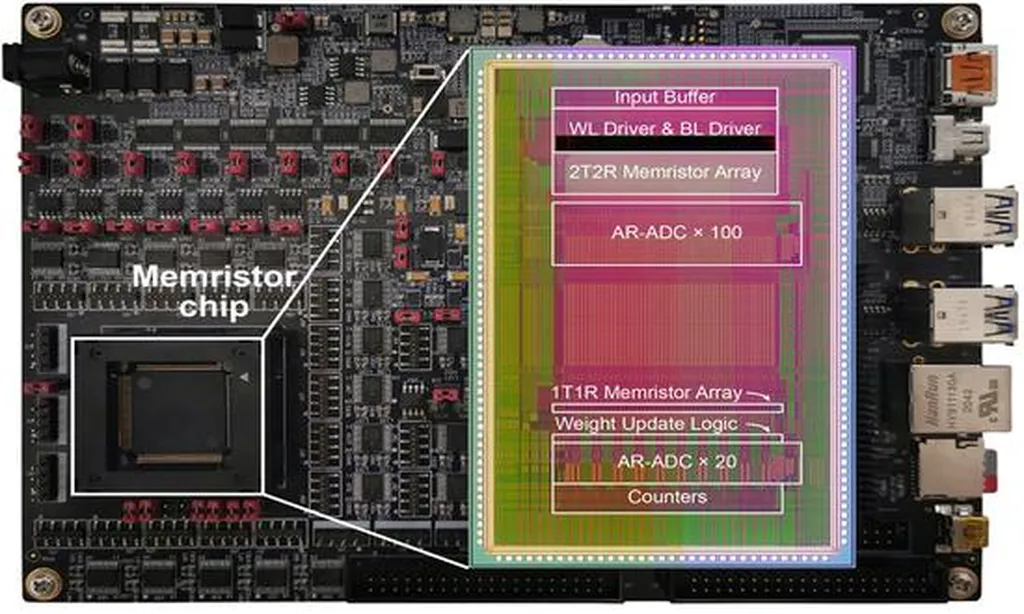In the quest for next-generation computing technologies, a team of researchers led by Zhaorui Liu from the School of Microelectronics at Shanghai University has made significant strides in advancing memristor technology. Their work, recently published in the ‘International Journal of Extreme Manufacturing’ (which translates to ‘Extreme Manufacturing’ in English), offers a comprehensive review of high-performance memristor technologies and their potential applications, with a particular focus on performance optimization and application-specific co-design.
Memristors, or memory resistors, are electronic devices that can remember the amount of charge that has passed through them, even after the power is turned off. This unique property makes them ideal for non-volatile memory applications, where data retention is crucial. Moreover, their fast switching speeds and low power consumption make them a promising candidate for energy-efficient computing and data storage systems.
The research team systematically explored recent advancements in memristor technologies, focusing on performance enhancement strategies through material engineering, structural design, pulse protocol optimization, and algorithm control. “We provide an in-depth analysis of key performance metrics tailored to specific applications, including non-volatile memory, neuromorphic computing, and hardware security,” said Liu.
The potential commercial impacts of this research are substantial, particularly for the energy sector. As the world grapples with the challenges of climate change and the need for sustainable energy solutions, the demand for energy-efficient technologies has never been greater. Memristors, with their low power consumption and high performance, could play a pivotal role in meeting this demand.
Furthermore, the team proposed a co-design framework that integrates device-level optimizations with operational-level improvements. This approach aims to bridge the gap between theoretical models and practical implementations, paving the way for the large-scale application of memristors.
The research also highlights the challenges that need to be overcome before memristors can be widely adopted. These include material stability, device reproducibility, and array scalability. However, the team’s work represents a significant step forward in addressing these challenges and unlocking the full potential of memristor technology.
As we look to the future, the work of Liu and their team could shape the development of next-generation computing technologies, with profound implications for the energy sector and beyond. Their research not only advances our understanding of memristor technology but also provides a roadmap for its practical application, bringing us one step closer to a more sustainable and energy-efficient future.
In the words of Liu, “This review systematically explores recent advancements in high-performance memristor technologies, focusing on performance enhancement strategies through material engineering, structural design, pulse protocol optimization, and algorithm control.” Their work is a testament to the power of interdisciplinary research and the potential of memristors to revolutionize the field of computing.

